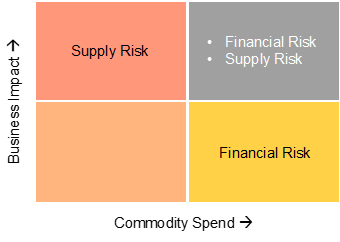Tactics for Negotiation with Monopolistic Suppliers
Learn effective strategies to negotiate with monopolistic suppliers, including leveraging market intelligence, fostering mutual dependence, and emphasizing value propositions. Enhance your negotiation skills and navigate monopolistic markets successfully.
NEGOTIATION STRATEGIESNEGOTIATION SKILLSNEGOTIATION TACTICSMONOPOLISTIC SUPPLIER
Ashish Mendiratta
10/17/20237 min read


Negotiating with monopolistic suppliers can be a challenging and complex process. In this article, we will delve into the strategies and tactics that can be employed to navigate such negotiations successfully. Monopolistic suppliers hold a significant amount of power due to their market dominance, which can often result in favorable terms for themselves and unfavorable conditions for buyers. When faced with limited alternatives and an overpowering market force, it becomes imperative to approach such delicate negotiations with a strategic mindset. However, by understanding the dynamics of the market and the specific needs and goals of both parties, it is possible to achieve mutually beneficial outcomes. This article will explore key negotiation techniques, such as leveraging alternative options, building relationships, and conducting thorough market research. Additionally, it will highlight the importance of maintaining a strong position and being prepared to walk away if necessary. By adopting a strategic approach, buyers can improve their negotiating power and secure more favorable deals with monopolistic suppliers.
Reasons for Monopolistic Situations
Monopolies are characterized by a lack of economic competition to produce the good or service, a lack of viable substitute goods, and the possibility of a high monopoly price well above the seller's marginal cost that leads to a high monopoly profit. The key reasons for a monopolistic situation are:
Single Source enforced by regulations or law e.g. Indian Railways
Patents and IP Limitations e.g. Pharma companies
Lack of potential substitutes for the product or service e.g. Water
End users’ preference e.g. the user of the product (production or engineering) may influence specifications to suit one supplier and eliminate other potential suppliers
Technical constraints e.g. if a company has installed a Tetrapack machine, they will have to buy the packing materials from Tetrapack
High switching cost e.g. switching from Microsoft Office to Google Suite would require retraining all the employees and impact on the employees’ productivity during transition period
Global agreements, sometimes the global agreements reached by a company’s corporate office forces the units to buy from the single source
Cartelization
If the market structure is oligopolistic, the suppliers may collude to avoid competition that may benefit the buyers. Cartels are usually associations in the same sphere of business, and thus an alliance of rivals. Most jurisdictions consider it anti-competitive behavior. Example: OPEC (Organization of the Petroleum Exporting Countries)
The various forms of cartel are:
Price fixing cartels - The suppliers agree to fix the prices, to make the bidding process redundant
Bidding cartel – The suppliers collude to quote similar prices and terms that ensures that prices remains inflated irrespective of which supplier wins the bid
Market sharing cartel – The suppliers agree to divide the markets that they would serve exclusively, ensuring all the suppliers benefit and leaving no option for the buyers
The Competition Act of most countries contains strong provisions against cartels. The affected buying companies can report the cartelization to the appointed agency, e.g. CCI (Competition Commission of India), who may take suitable actions as per the legal provision.
Before making a strategy to deal with a monopolistic source, one needs to understand the type of risks it exposes the company to. Potentially, there are two risks associated with a monopolistic source:
Financial risk – one may end up paying more for a product or service than what it should actually cost, thereby adversely impacting the profitability
Supply risk – discontinuity of supplies leading to loss of business
The type of risks associated with monopoly depends on the level of spend on a commodity as well as it’s impact (importance) on the business, as show below:


Key Strategies and Tactics for dealing with Monopolistic Suppliers
Do not Negotiate with Yourself:
Do not negotiate with yourself when dealing with a monopolistic supplier. It is important to maintain a strong position and not undervalue your own needs and requirements. By negotiating with yourself, you may end up settling for less favorable terms and conditions, allowing the supplier to take advantage of the situation. Even a monopolistic supplier needs your business. Remember, negotiating with a monopolistic supplier requires a firm and assertive approach, and it is essential to hold your ground and not concede to unreasonable demands.
Challenge Supplier with Market Intelligence:
Knowledge is power. Before initiating any negotiation, conduct a comprehensive analysis of the market. Understand the supplier's position within the industry, their historical pricing strategies, and their key competitors. Such insights will empower you to craft a well-informed negotiation strategy.
Example: A pharma company relied heavily on a monopolistic supplier for a crucial ingredient used in the product. By conducting a thorough market research, the procurement team figured out that one of the key raw materials used for the manufacturing of the ingredient was certain types of esters. The research further revealed that the international prices of those esters had declined due to excessive supply. Armed with the research, the procurement team could place the facts on the table that supplier could not counter.
Develop Strategic Relationship:
Monopolistic suppliers also value long term relationships because it takes them 5 times more effort to acquire a new supplier than maintaining an existing one. Establishing a partnership based on trust and transparency often paves the way for more flexible negotiations and better terms in the long run.
Example: A paper manufacturing company had a monopolistic supplier for the specialty chemicals. These chemicals had significant impact on the quality of the paper and the efficiency of the production process. The procurement team shifted from the transactional buying approach to a strategic one. The supplier was made responsible for managing the entire chemicals program with a target cost of consumption and improvement in the paper quality. The supplier got the facilities to experiment and innovate at the company's production facilities. The supplier developed an optimized recipe of chemicals that brought down the Total Cost of Ownership for the company.
Increase Mutual Dependance:
By fostering a strong and collaborative relationship with suppliers, the company can create a sense of interdependence, where both parties rely on each other for success. This can lead to increased supplier loyalty and willingness to negotiate better terms and conditions. Furthermore, mutual dependence can also incentivize suppliers to invest in the company's success, ensuring a continuous supply of high-quality products or services.
Example: A hospitality company solely depended on Microsoft for MS office 365 licenses for its employees. It had little leverage with MS for negotiating the license cost. There was another procurement team for buying cloud based services e.g. SQL servers, cloud computing, enterprise mobility which is a highly competitive market. The company consolidated the spend of both the categories. The competitive market for the higher spend in cloud services allowed company to get a better overall deal.
Redefine the Supply Market:
Many a times, thinking out of the box to find creative alternatives can help to come out of the monopolistic situations. When faced with limited options and a dominant player in the market, it is crucial to explore new and innovative approaches. This requires stepping outside of traditional norms and considering unconventional solutions. By doing so, we open ourselves up to a world of possibilities and can uncover unique ways to challenge the status quo.
Example: A ceramic tiles manufacturing company had huge spend on the furnace oil that had oligopoly of public sector oil companies. The company redefined the supply requirements from oil to energy. It converted the furnace from oil fired to gas fired to increase the supply base as well as reduce the cost.
Focus on Total Cost of Ownership (TCO):
The supplier may insist on applying the ‘headline price’, knowing the product or service cannot easily be obtained elsewhere. However, the supplier may be persuaded to make other non-price concessions of value to you. Price is not the only negotiation variable. In order to optimize deal, we look for the other levers for reducing the total cost of doing business, and think outside the box. Every element of the total cost provides an opportunity to negotiate a saving, often with surprising results.
Example: A large provider of telecommunication services had increased spend for hardware due to increase in the storage and computing requirements. The existing supplier had a good relationship with the IT team of the company. The cost of switching to another supplier was high. While the supplier was hard fixed on the direct costs, the procurement team expanded the scope of negotiation to indirect elements e.g. maintenance, software upgrades that were part of the TCO. The supplier was asked to requote based on the TCO and significant savings were achieved.
Play Hardball:
Playing a hardball in business can be an effective strategy when it comes to tackling monopolistic suppliers. By adopting a tough and assertive approach, companies can level the playing field and negotiate better terms and conditions with these suppliers. This can include demanding fair prices, improved product quality, and more favorable contract terms. Playing a hardball can also send a strong message to monopolistic suppliers that their dominance will not go unchallenged, potentially discouraging them from engaging in anti-competitive behavior.
Example: A global financial services firm had its back against the wall because it had to reduce costs by $3 billion. To cut IT infrastructure costs, it asked its major hardware supplier for a 10% price decrease. When the supplier refused, the firm’s chief information officer contacted the supplier’s CEO to say that all the supplier’s projects in the company were suspended, effective immediately. Within an hour the supplier was deactivated in the payment system, and the procurement, IT, and development teams were notified that they were no longer to work with it. Faced with the costly loss of existing and upcoming projects, the supplier quickly agreed to the price cut.
By integrating these strategic tips into your negotiation approach, you can navigate the challenges presented by monopolistic suppliers with confidence and poise. Cultivating a nuanced understanding of the supplier's position, leveraging alternative options, and fostering a collaborative atmosphere are key to achieving favorable outcomes and maintaining a sustainable business relationship within the constraints of a monopolistic market.
Subscribe
Contact:
P2/54 DLF Phase 2 Gurugram 122002
contact@advanchainge.com
+91-9873829286
deepak.nande@advanchainge.com
+91-9820291969


